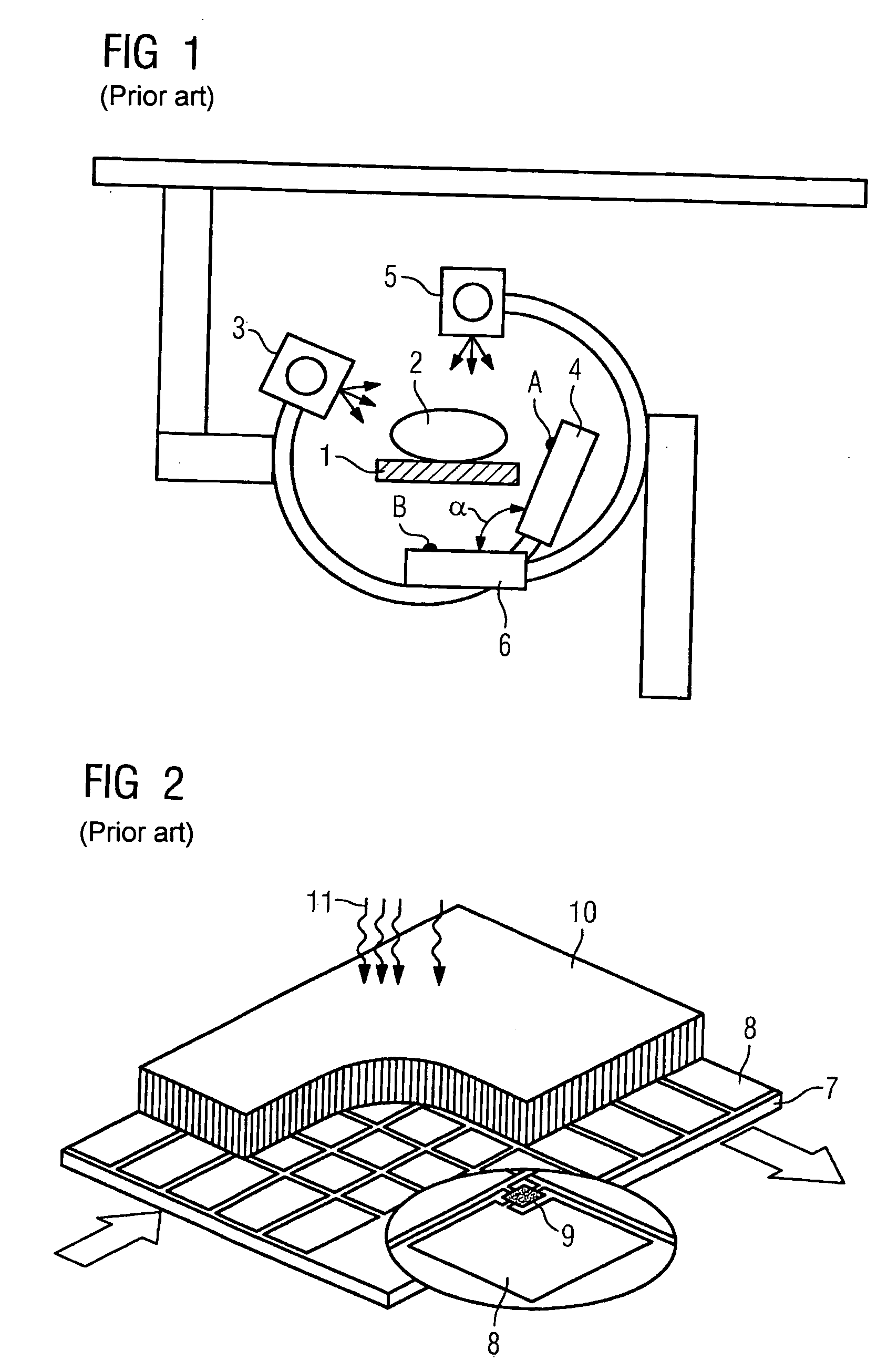Method for producing X-ray images
- Summary
- Abstract
- Description
- Claims
- Application Information
AI Technical Summary
Benefits of technology
Problems solved by technology
Method used
Image
Examples
Embodiment Construction
[0028]FIG. 1 shows a schematic sectional view of a state-of-the-art x-ray device. A body 2 which is to be x-rayed is held on a bed 1. Arranged opposite a first x-ray source 3 is a first semiconductor detector 4, and opposite a second x-ray source 5 is a second semiconductor detector 6. A first plane A, which lies parallel to a detector surface on the first semiconductor detector 4, cuts a second plane B, which lies parallel to a detector surface on the second semiconductor detector 6, at an angle α, which is preferably greater than 80 degrees and less than 150 degrees.
[0029]FIG. 2 shows a partly cut-away perspective view of a state-of-the-art semiconductor detector. The example shown is a semiconductor detector in which a multiplicity of photodiodes 8 are arranged, in the nature of a matrix, on a substrate 7. Each of the photodiodes 8 can have a switch 9, with which the photodiodes 8 can be switched to record a signal or to read out. The photodiodes 8 are overlaid with a converter ...
PUM
 Login to View More
Login to View More Abstract
Description
Claims
Application Information
 Login to View More
Login to View More - R&D
- Intellectual Property
- Life Sciences
- Materials
- Tech Scout
- Unparalleled Data Quality
- Higher Quality Content
- 60% Fewer Hallucinations
Browse by: Latest US Patents, China's latest patents, Technical Efficacy Thesaurus, Application Domain, Technology Topic, Popular Technical Reports.
© 2025 PatSnap. All rights reserved.Legal|Privacy policy|Modern Slavery Act Transparency Statement|Sitemap|About US| Contact US: help@patsnap.com



